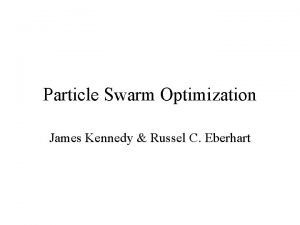Chandra Science Highlight PSO 167 13 A Distant

- Slides: 1

Chandra Science Highlight PSO 167 -13: A Distant Heavily Obscured Supermassive Black Hole Distance estimate: 12. 9 billion light years (z=6. 515) Scale: Large image is about 13. 3 arcmin (14. 5 million light years) across. Inset images are about 5 arcseconds (91, 000 light years) across. • The X-rays are likely from PSO 167 -13, a quasar at a distance of 12. 9 billion light years. • Chandra observations of PSO 167 -13 detected no lowenergy (0. 5 – 2 ke. V) X-rays, indicating that the quasar is highly obscured by gas and dust. • PSO 167 -13 is the first highly obscured quasar detected at such large distances, corresponding to an age of only 850 million years, or 6. 5% of the estimated age of the universe. • A plausible explanation for the obscuration is that PSO 16713 is a supermassive black hole rapidly accreting material from a surrounding cloud of dust and gas. Credits: X-ray: NASA/CXC/Ponticifca Catholic Univ. of Chile/F. Vito; Radio: ALMA (ESO/NAOJ/NRAO); Optical: Pan. STARRS Caption: Large image: Pan. STARRS survey of region containing the quasar PSO 167 -13 (position marked with a red cross). Insets: images of central region containing PSO 167 -13 (marked with a red cross) from Chandra (left) and (right) the Atacama Large Millimeter Array (ALMA). The bright source in the ALMA image is the quasar and a faint, nearby companion galaxy is seen to the lower left. CXC Operated for NASA by the Smithsonian Astrophysical Observatory Instrument: ACIS Reference: A&A 628, L 6 (2019 ar. Xiv: 1906. 04241 [astro-ph. GA] August 2019

